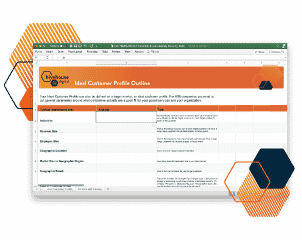
Welcome back to our series covering the best in inbound marketing strategies. We’re glad you’re sticking with us! We’ll help you become brainier than ever in our first series topic, defining your ideal customer.
In our last blog, we discussed the importance of a great customer profile to your company’s overall marketing strategy. Taking the time to define your ideal customer in detail will show you how to speak to them in a way that truly resonates with their needs. Clarifying the characteristics of the customers you’re trying to attract to your business also goes hand in hand with crystallizing your own strengths and goals. As a result, you’ll find yourself attracting the kinds of customers that fit you best—which sets the stage for your success.
No doubt, a really effective customer profile will take time and energy to create, but we’re here to help you through it. We promise it’s worth the effort!
So, read on for part two of the four-part series…
Creating The Ideal Customer Profile
We got on our soapbox in part one of this series to point out a key distinction: that while your customers are organizations, they are also composed of unique individuals with diverse needs. At Hivehouse Digital, we’ve found that the most effective profiles use an approach that blends two time-tested marketing tactics: the Ideal Customer Profile and the Buyer Persona (BP). Let’s begin today with the Ideal Customer Profile.
To create the Ideal Customer Profile, you’ll need to gather some key data about your ideal customers. Yes, it’s time for those bullet points we promised! Visualize your favorite customers as you try to identify the following:
Key company demographics of the ideal customer:
- Company age and/or stage of maturity (start-up, growing, declining)
- Number of employees
- Company infrastructure (franchise, privately held, publicly traded, etc.)
- Geographic area/region
- Number of office locations or sites
- Annual revenue or sales volume
The ideal customer’s industry characteristics:
- Industry type (construction, oil and gas, pharmaceuticals, etc.)
- Products or services offered
- Target market/s (who are their customers?)
- Industry’s norms and values
The company needs and pain points for your ideal customer:
- Why does this company want or need your product or service?
- What are their specific problems or pain points?
- What do they believe are the solutions to their pain points?
Now that you’ve got down some basic data defining the types of companies you want to pursue, you’re halfway there! Join us for our next step in the series: Individualizing Your Customers with Personas, which will help you to start thinking about the diverse challenges of your customers’ employees.
Get the latest news
Blog Topics
- Analytics
- Branding & Identity
- Budget
- Construction
- Content Marketing
- Conversion Rate Optimization
- Email Marketing
- HubSpot
- Inbound Marketing
- Lead Generation
- Marketing Strategy
- News/Events
- Paid Search & PPC
- Recruiting
- Sales & Marketing
- Sales Enablement
- Search Engine Marketing
- Search Engine Optimization
- Social Media
- Thought Leadership
- Uncategorized
- Usability
- Video Marketing
- Web Hosting
- Website Design
